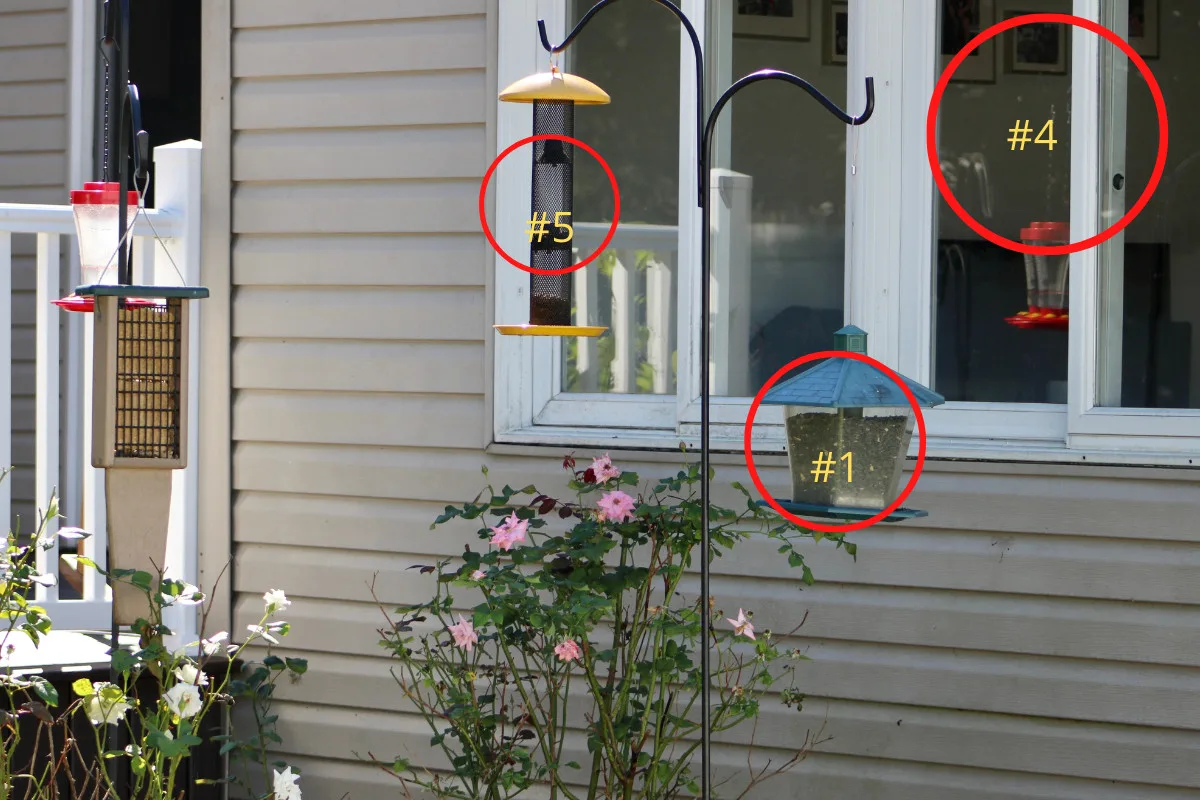There’s nothing worse than putting out a fresh feeder full of birdseed and, moments later, looking up to see this guy staring back at you.
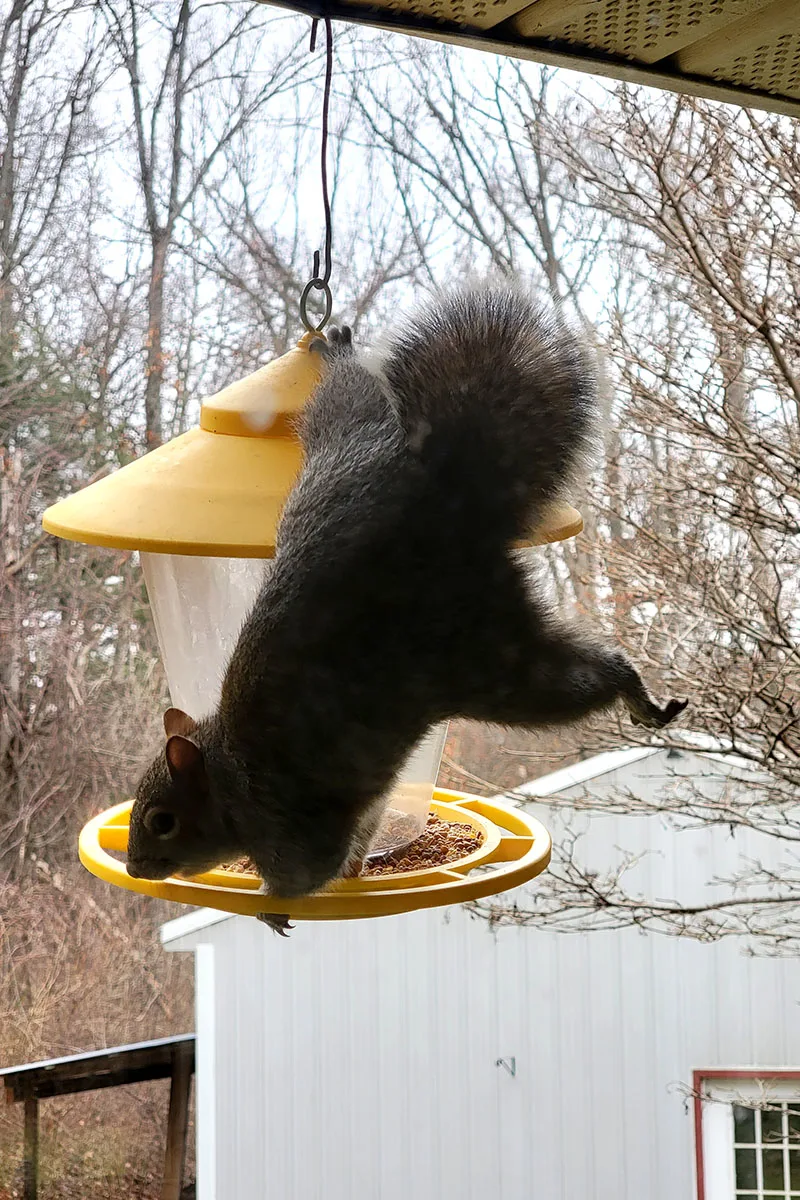
What was supposed to be a feast for your favorite feathered friends ends up being an all-you-can-eat buffet for a “tree rat.” (My sweetie’s nickname for squirrels that get into his feeders.) Squirrels can be a real pain for backyard bird enthusiasts. They empty bird feeders, scare away the birds and can even damage your feeders, making them unusable.
We had one squirrel who liked my homemade suet so much that he stole the whole suet feeder. In short, squirrels can be a real pest.
There are ways of making your feeders less appealing to squirrels.
But as anyone who has been feeding birds long enough will tell you, there is no such thing as a squirrel-proof bird feeder. With enough determination, they will get to the seed eventually.
That’s why keeping squirrels in check requires several barriers to birdseed. By employing at least three of these tips, you’re much more likely to succeed in keeping squirrels out of your feeders. Use all the tips, and you’ll have a backyard anti-squirrel fortress.
1. Place Your Feeder Out in the Open
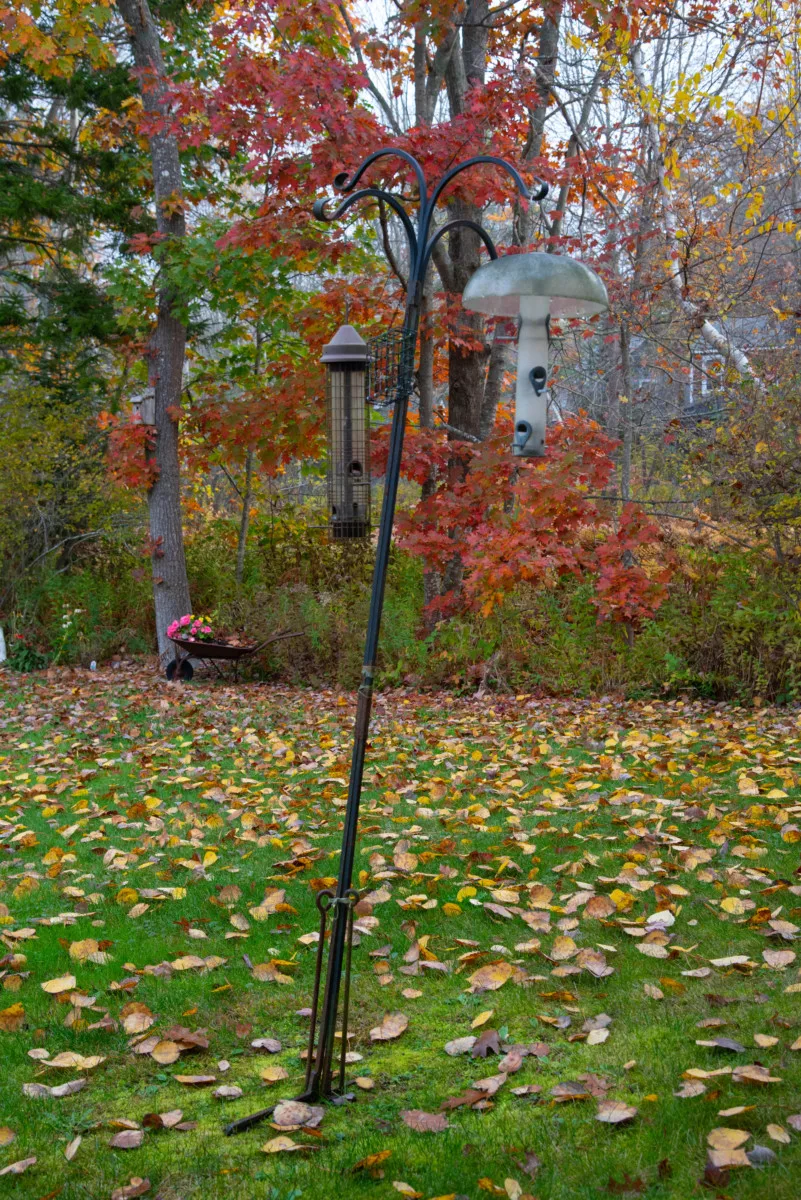
Squirrels are pretty skittish and are less likely to approach a feeder in an open, well-lit area where predators can easily see them. Placing a feeder in the middle of the yard is a great way to make squirrels think twice before heading over for a snack.
2. Hang the Bird Feeder From a Pole
Squirrels have difficulty climbing smooth, vertical surfaces such as metal poles. Placing your bird feeder atop a pole is a great way to deter them. There are a few caveats here. The pole needs to be larger in diameter than a squirrel could easily wrap its arms around.
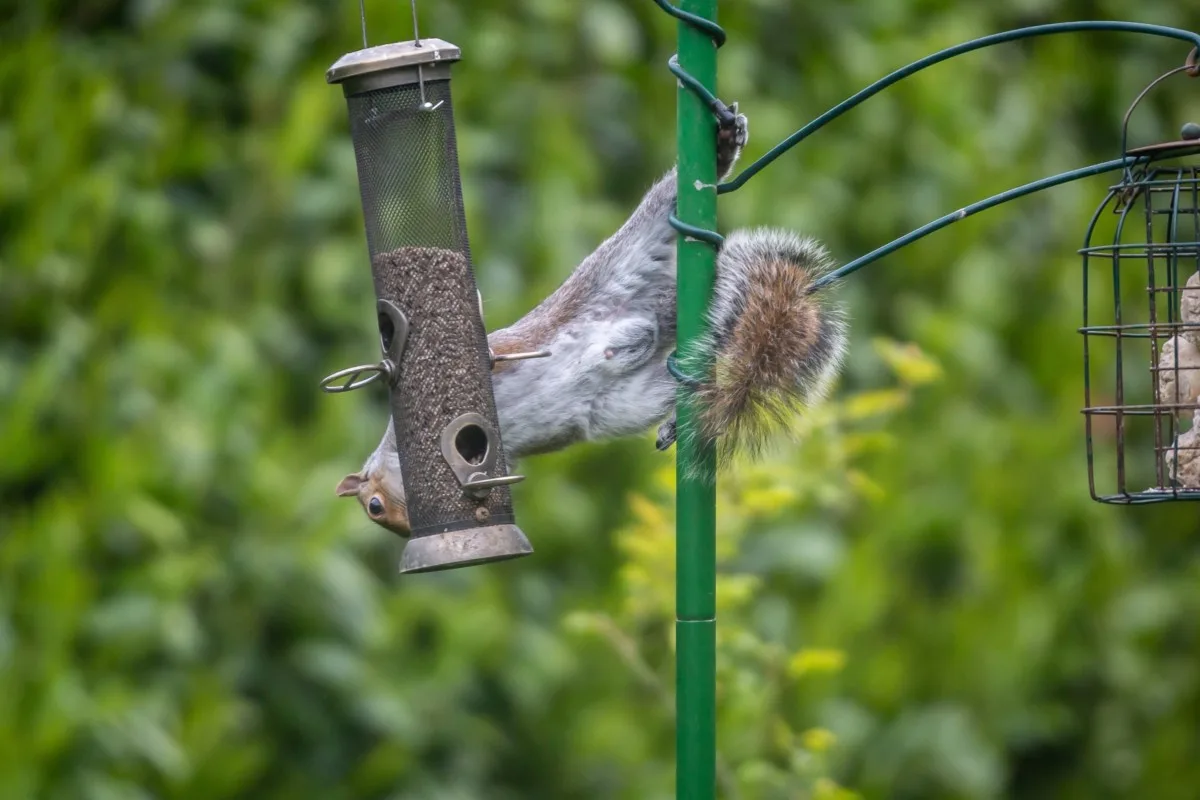
A squirrel can climb small skinny poles; not easily, but it can be done. A 4” diameter pole is a good place to start. The larger, the better.
It also helps to use metal rather than wood or PVC pipe. Both wood and plastic can be scratched and provide enough resistance for the squirrel to climb. Metal stays slick.
And the final caveat involves an aerial attack; we’ll get to that in the next tip.
3. Place Your Feeder Out of Jumping Reach
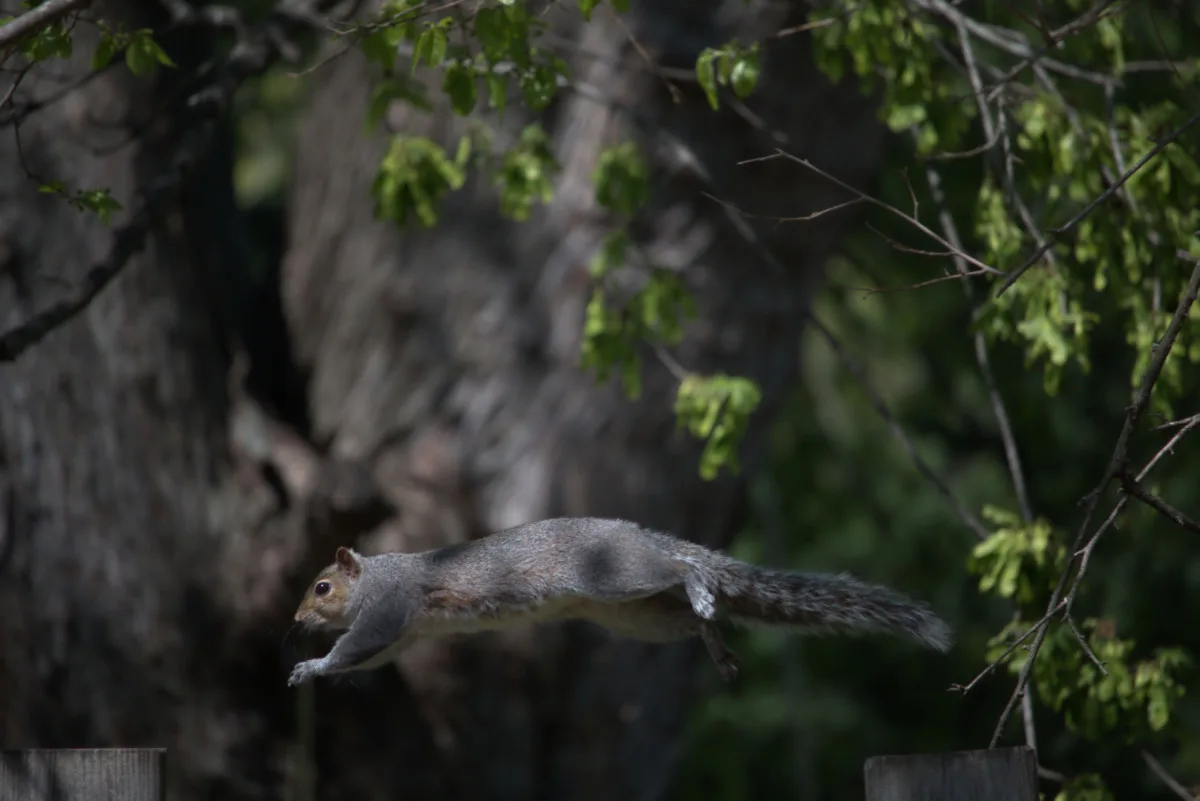
Squirrels are incredible jumpers; they were built for it. Even if you place your bird feeder on a pole, if it’s within jumping distance of trees or buildings, squirrels will get to it. Placing feeders out of jumping reach is probably one of the most important tips for keeping your bird feeder squirrel-free. They can jump about four feet vertically and ten feet horizontally.
4. Add a Baffle to Your Feeding Setup
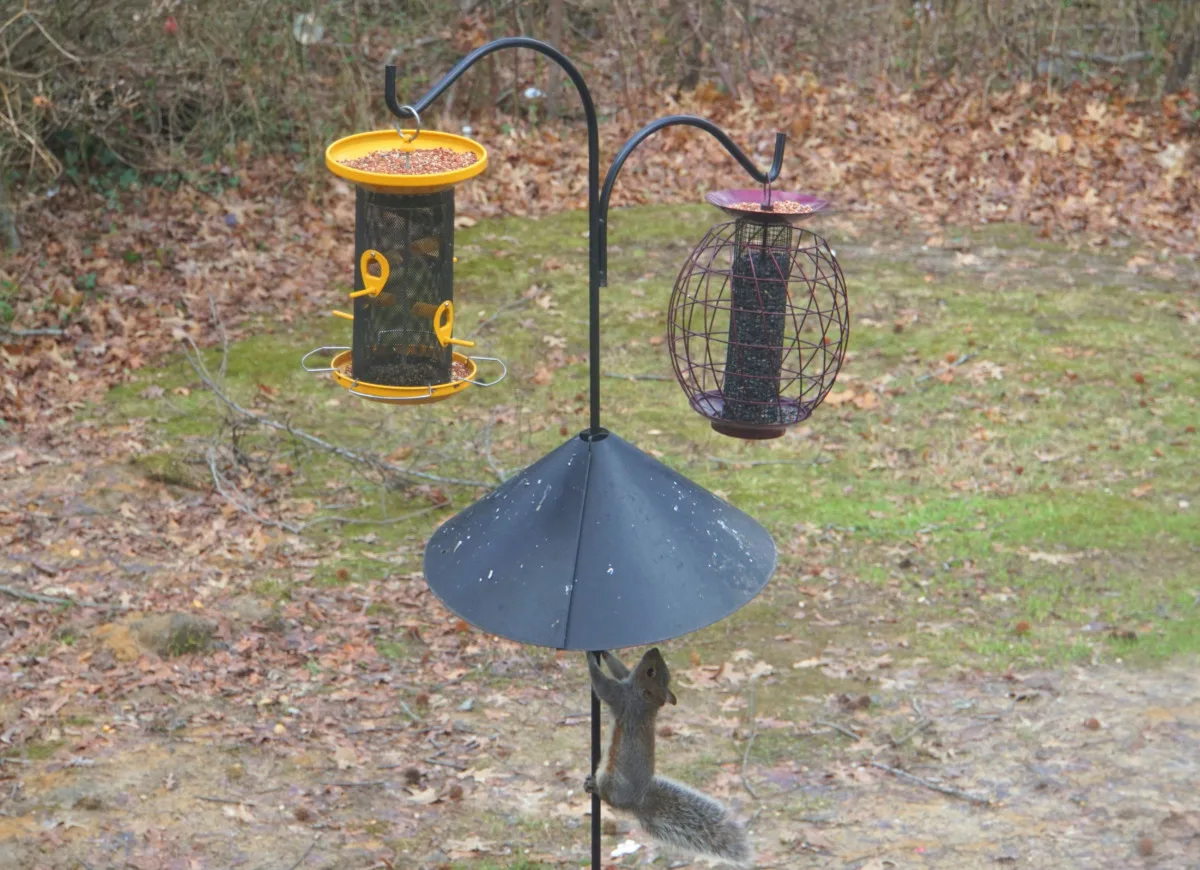
A baffle is a dome or cone-shaped device (like this one) that can be placed above or below a feeder to prevent squirrels from reaching it. If you’ve got a serious squirrel problem, I suggest you go with a double-whammy approach and place a baffle above and below your feeders.
Using baffles is especially important for feeders within jumping distance of trees or buildings or feeders placed at the edge of woods for more shy birds.
Speaking of shy birds – learn how to attract the Northern Cardinal to your feeder with this important tip.
5. Don’t Overfill Your Feeders
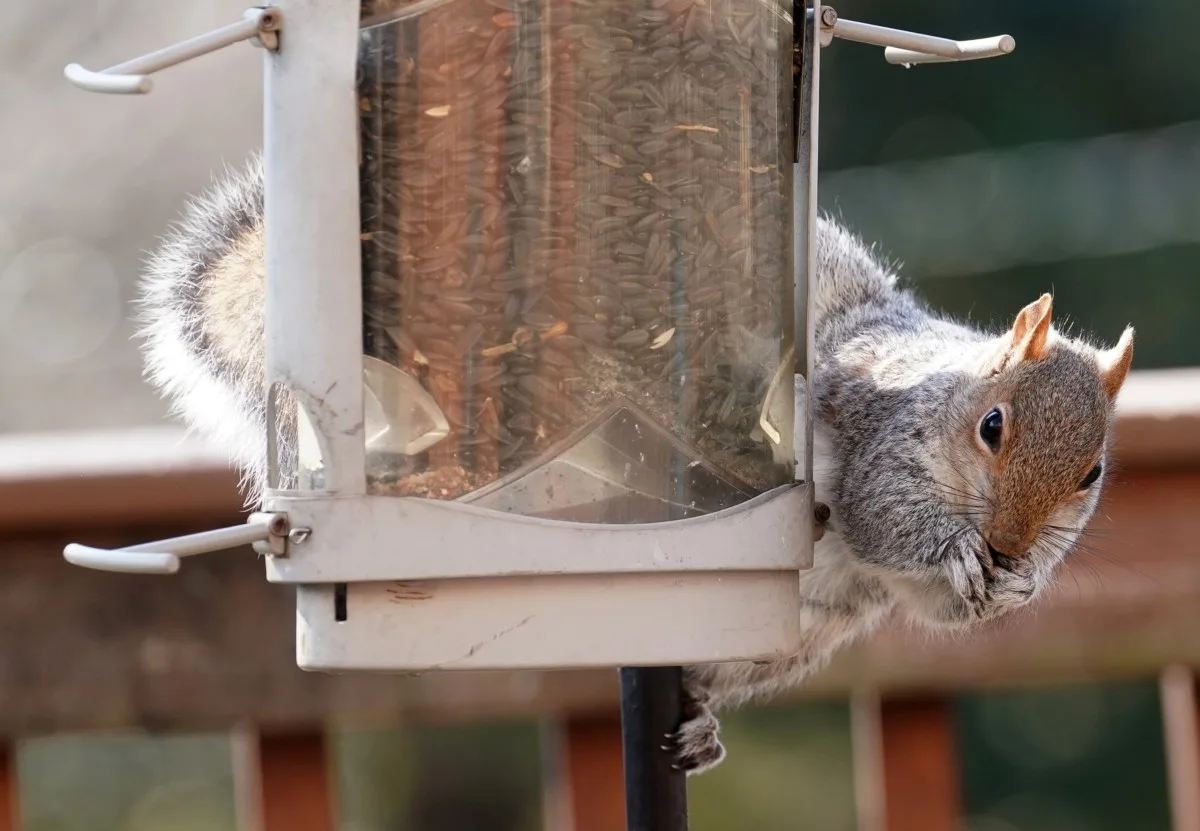
Only put out a little seed in your feeders at a time. Squirrels are looking for a constant supply of food. If they learn that the pickins are slim at your place, they will search for a better supply elsewhere.
Not overfilling your feeder is also important for the health and safety of your birds. Spoiled and moldy birdseed can make birds sick and spread disease. Unless you have enough feathered visitors that you’re refilling your feeders daily, there’s no need to put out a feeder full of seed.
6. Pepper Spray Your Setup
Birds can’t taste capsaicin; they lack the taste receptors to feel its heat. But if you’ve got a persistent squirrel, you’ll make it think twice before coming back to your feeders if you add a little heat.
Put capsaicin-based pepper spray on the bird feeder poles, which will make the poles too hot and spicy for squirrels to climb. Be very careful doing this. Wear goggles, gloves and a mask. Pay close attention to which way the wind is blowing. Do not touch the poles when you’re refilling the feeders.
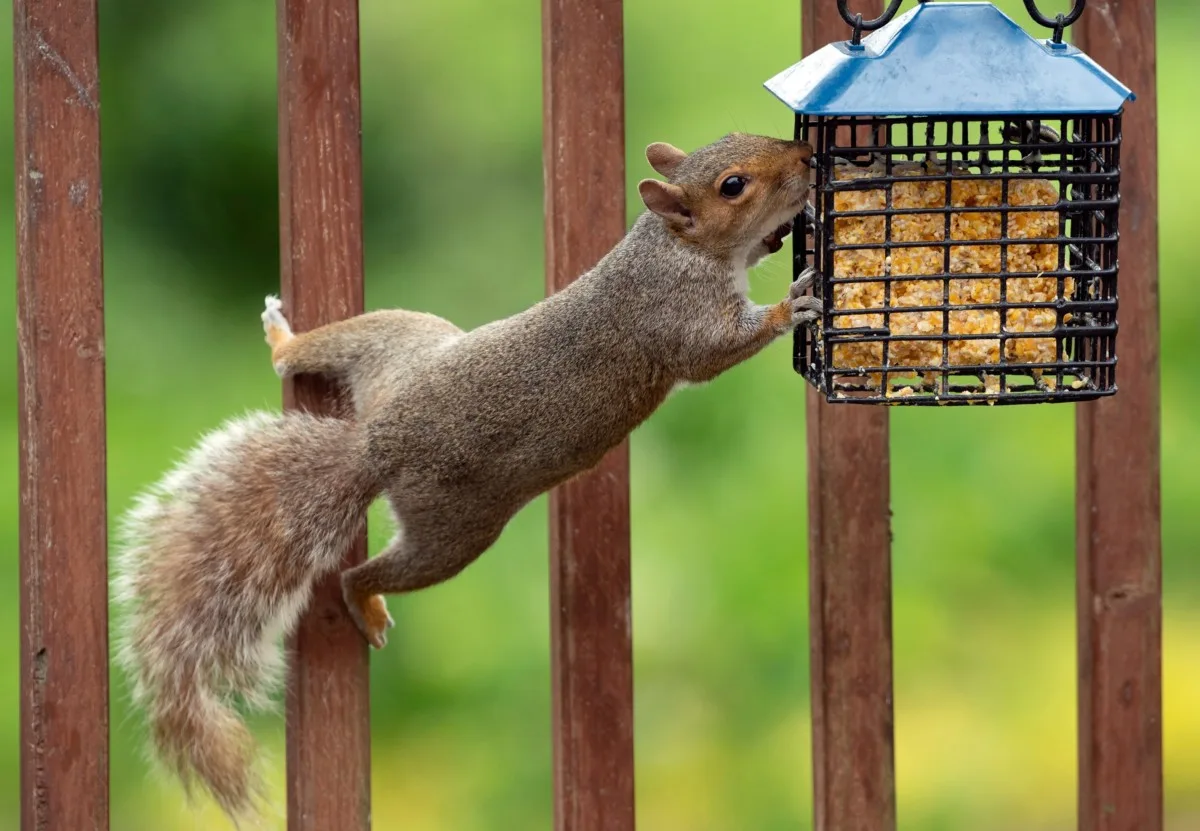
Use suet with cayenne pepper in it – you can use my recipe and add a couple of teaspoons of cayenne pepper to it. Once they get a bite or two, they won’t want anymore.
7. The Best Squirrel Resistant Feeders
As I said in the beginning, there is no such thing as a squirrel-proof bird feeder. Given enough time, these determined creatures will find a way. However, some good designs out there will certainly make it tough for squirrels to do. Along with these other tips, it may be enough to discourage them entirely.
The best squirrel-resistant designs have weighted perches. The squirrel’s weight on the perch closes the ports to the seed.
This is probably the most popular weight-activated perch feeder, but you’ll notice all the decoration gives squirrels a lot to hang on to. That being said, the ports are firmly closed under the squirrel’s weight.
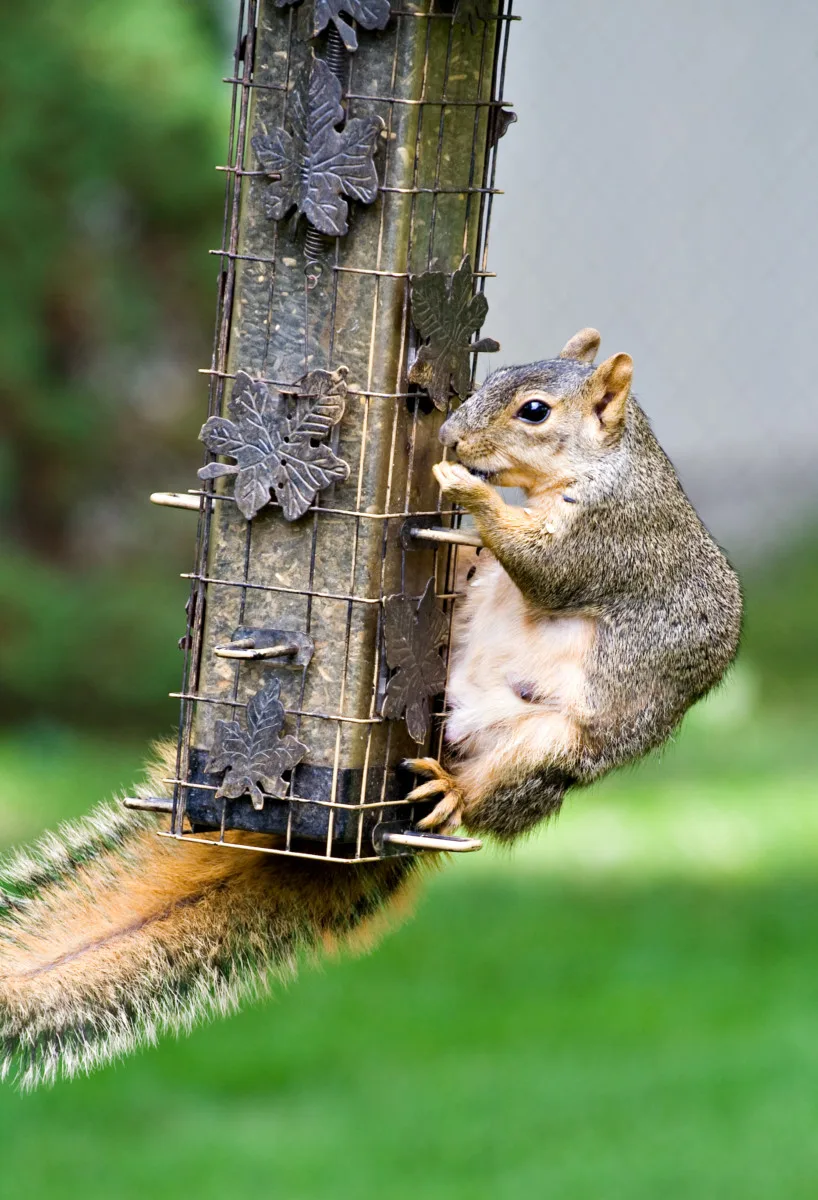
This weight-activated feeder is great because it’s a slick tube with a small baffle on top.
This feeder takes a different approach. It’s also weight-activated, but rather than closing the ports, the squirrel’s weight activates a motor that spins the perches…and the squirrel.
If You Can’t Beat ‘Em
You know the old saying. And for many backyard birding enthusiasts, squirrels are just as welcome as the birds.
Plenty of people give up on trying to outsmart these brilliant animals and instead make them welcome. Once you make the mental shift from pest to pal, you’ll find squirrels are often as entertaining as your feathered friends, sometimes more so.
My kids and I thoroughly enjoy watching YouTuber Mark Rober set up the wildest mazes in his backyard to make the squirrels who visit work for their treats. He even created a Backyard Squirrelympics. (It’s worth watching for the hilarious squirrel bobblehead commentators.)
Put a squirrel feeder far away from your bird feeder. As long as you keep it filled, this will usually be enough to discourage them from stealing from your birds.
Of course, once you get the squirrels sorted out, you may find other visitors at your feeder.
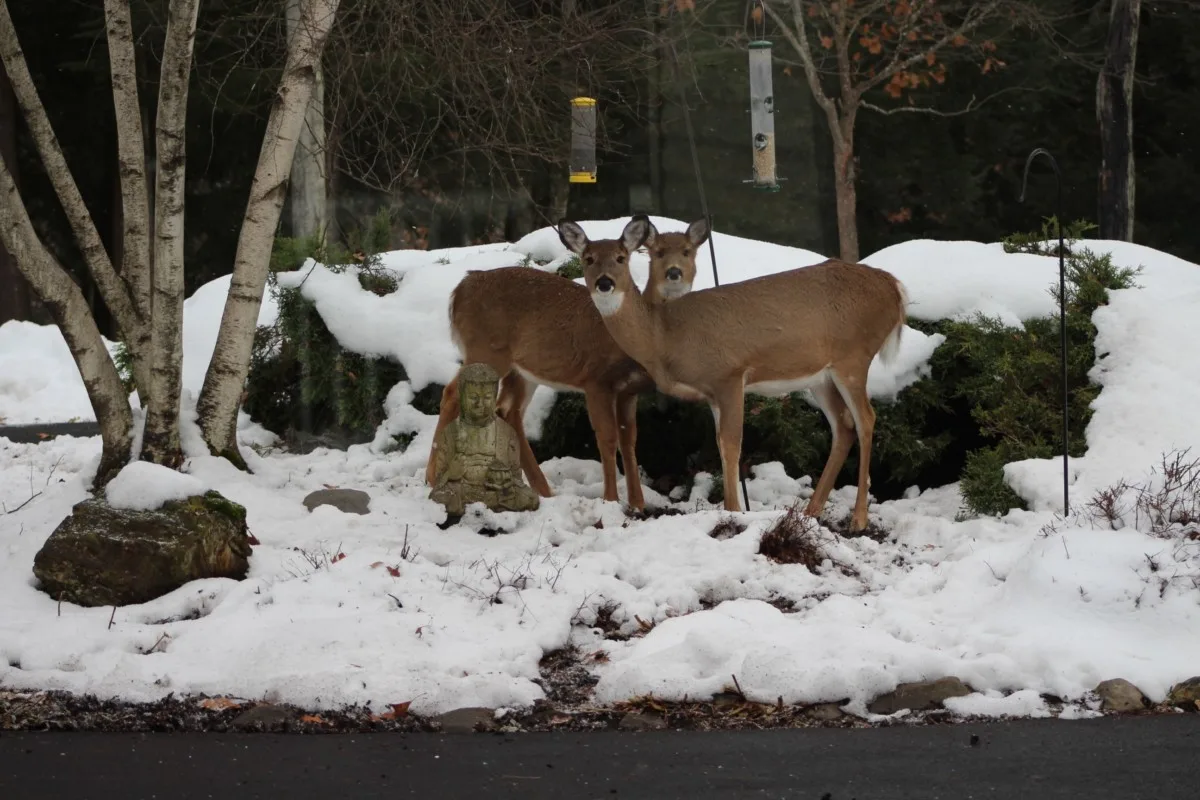
Read Next:

Get the famous Rural Sprout newsletter delivered to your inbox.
Including Sunday musings from our editor, Tracey, as well as “What’s Up Wednesday” our roundup of what’s in season and new article updates and alerts.


